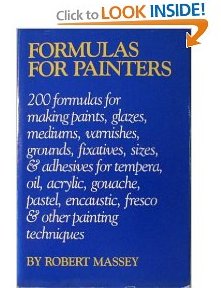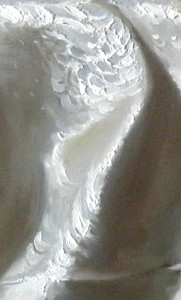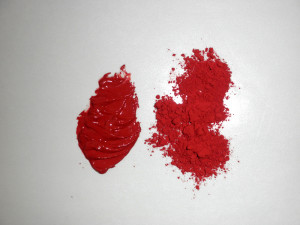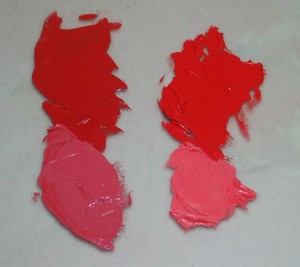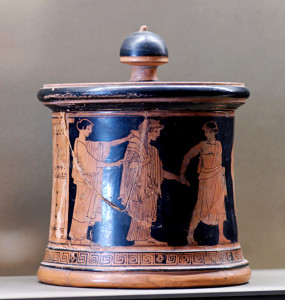Robert Massey's Canada balsam and sun thickened oil medium recipe resembles closely the legendary but no longer available, olio d'Abezzo. Strasbourg Medium Canada balsam, 4 parts, sun thickened linseed oil, 1 part, turpentine, 2 parts. Combine and warm the ingredients either in hot sunshine or over a double boiler, and stir them until they … [Read more...] about Strasbourg Medium
Pigments: Historical and Modern
There is a distinct difference between modern day pigments and the natural pigments used prior to the middle of the 1700s. In the past, artists had apprentices who ground the colors for them throughout the oil painting sessions. Because they were made by hand, the pigments retained a natural grittiness and consistency with larger particle size. Today's oil paint manufacturers make synthetic colors in huge vats where the end result is exceptional smoothness. Prior to the middle of the 1700, natural pigments came from dirt, minerals, and even plants.
Hemlock and Lead White
One of the most important events that took place at the very end of the 5th century BCE was the death of Socrates. I wanted to incorporate this into the composition of the painting without actually painting the flowers. The white flowering plant above is the blossom of the hemlock which I replicated across the surface of the focal piece of white … [Read more...] about Hemlock and Lead White
Naturally Red
Shown below is my favorite red, cinnabar. It is a pigment found as a mineral in nature and can have a wide variety of hues from bright fire red to a more subtle coral red. The principle property is mercury. It can have striations of opal, quartz, calcite and other minerals. According to Anita Albus in her book, Art of Arts, it is a Greek word, … [Read more...] about Naturally Red
A Discriminating Palette
Greek painters, especially those from the 5th century BCE, were remarkably skilled and created many hundreds of vases and other paintings. The many varieties of surfaces include terracotta plaques, walls, ceilings, panels, wood, marble, ivory, leather, parchment, and ceramic slabs. They used some of the most beautiful natural and synthetic pigments … [Read more...] about A Discriminating Palette
Modern vs. Historic
Shown here are two reds used by contemporary artists. The color on the left is vermilion straight from the tube on the top, mixed with a little white on the bottom. The color on the right is a very modern pigment, cadmium red. As you can see, the vermilion has a slightly more subtle tone to it, whereas, the cadmium is very shockingly bright. To … [Read more...] about Modern vs. Historic
The Wedding of Thetis and Peleus
About 470-460 BCE, the Wedding Painter painted this stunning vase. It measures 7 1/4" high by 5 1/4" wide. This one is actually quite small and many measured as much as 30" high or more. Many of the artists signed their pieces and historians can now identify the style characteristics of each artist. The Wedding of Thetis and Peleus, … [Read more...] about The Wedding of Thetis and Peleus

